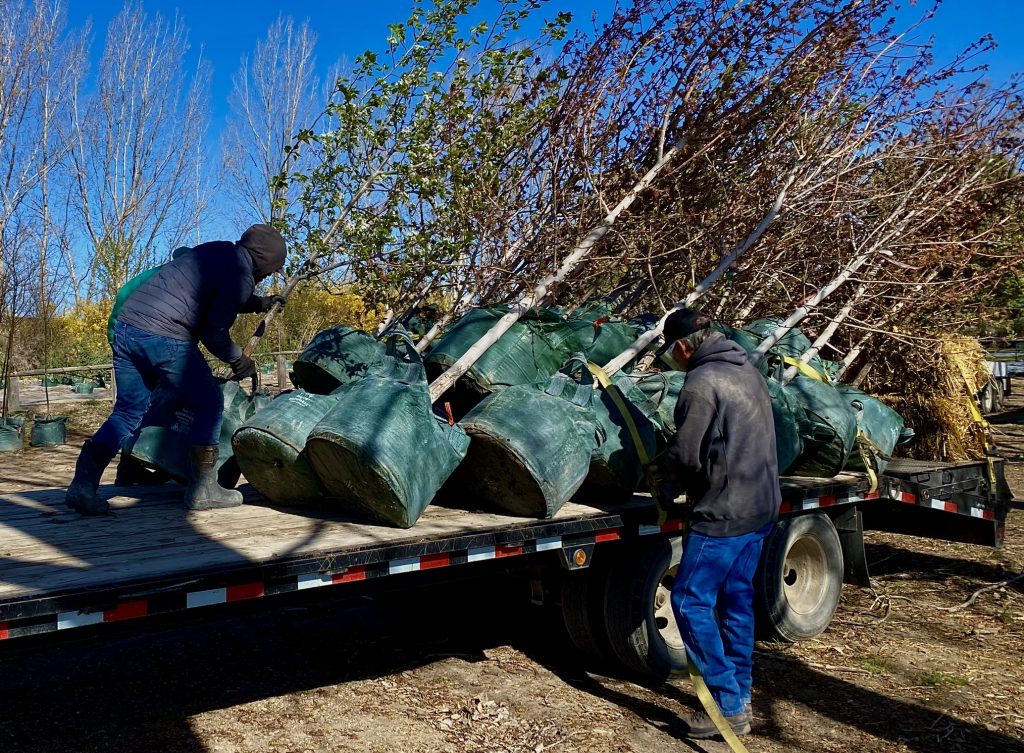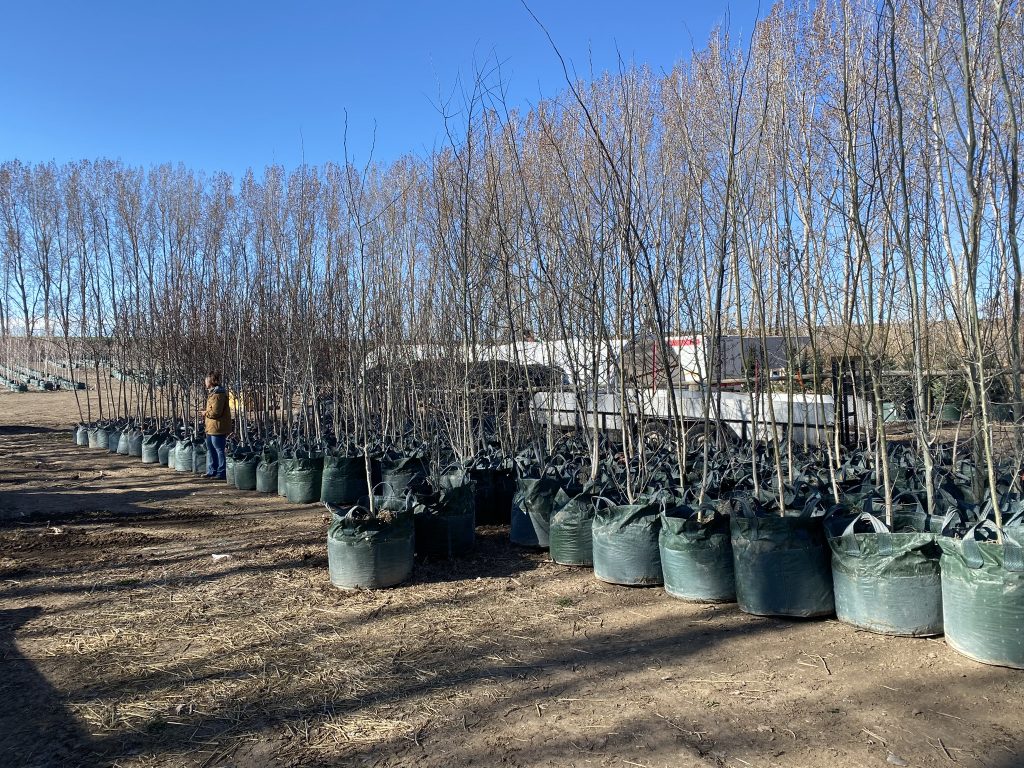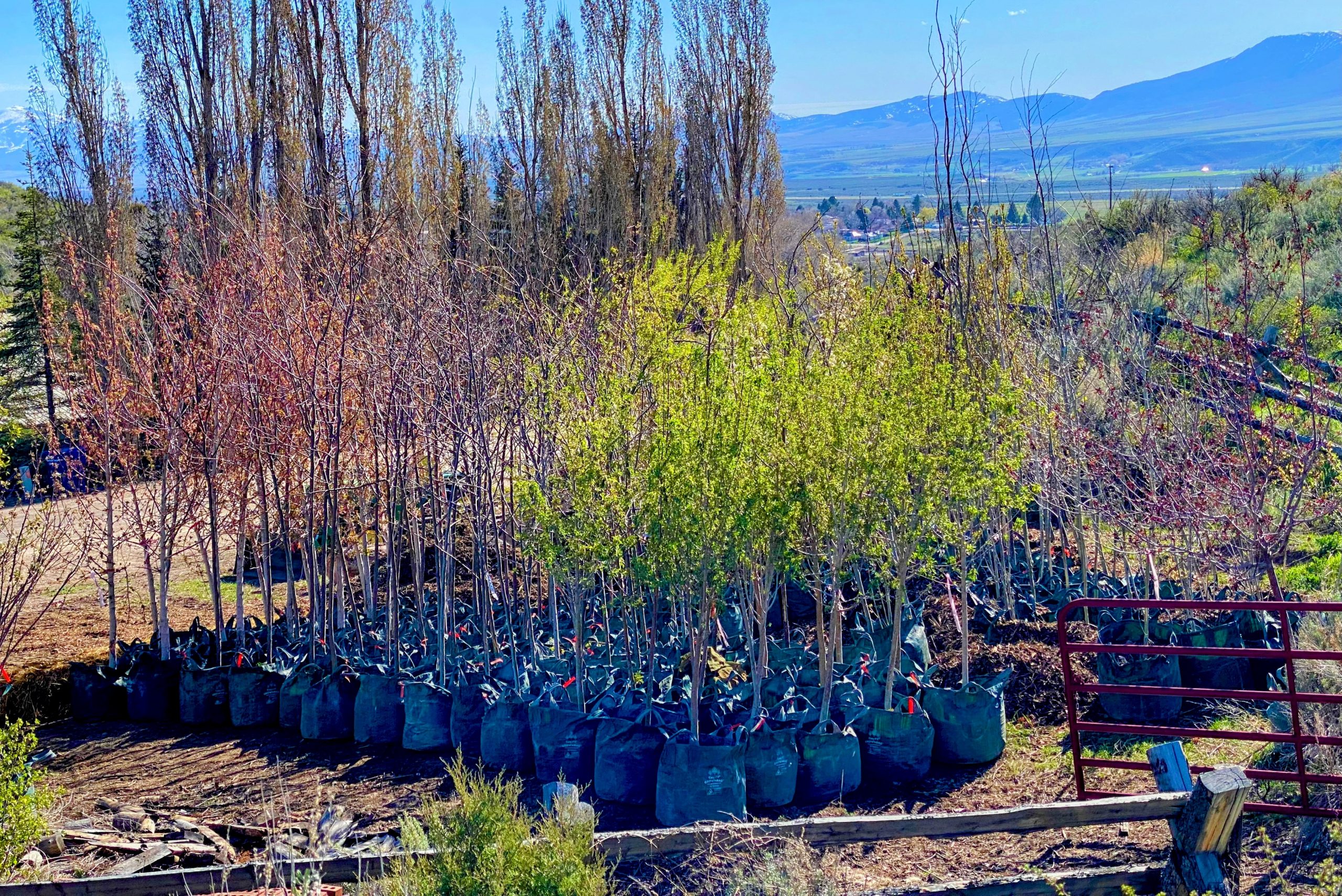Volunteers Salvage Trees for Wildlife Conservation in Southern Idaho
In southern Idaho, a partnership has been flourishing for over a decade between the Idaho Department of Fish and Game, the National Wild Turkey Federation and various civic and conservation groups. This alliance has quietly but significantly contributed to the enhancement of wildlife habitat through the strategic planting of trees, with recent efforts focusing on salvaging damaged trees for rehabilitation and repurposing.
Over the years, more than 10,000 trees have found their roots in Idaho soil, thanks to the collaborative efforts of these organizations. However, a recent turn of events presented an unexpected opportunity for further habitat improvement. A depredation claim involving over 350 damaged trees from a private nursery prompted IDFG biologists to reconsider the fate of these trees. Despite the damage inflicted by deer, they saw potential in salvaging many of them.
Two Idaho NWTF chapters joined forces to rescue and rehabilitate over 250 of these trees. Ranging from 10 to 15 feet in height and comprising species suitable for habitat projects and use in wildlife corridors, these salvaged trees hold immense promise for future conservation endeavors. With the support of the affected nursery, which provided valuable insights and resources, the chapters transported the trees over 150 miles to an auxiliary tree yard for rehabilitation.

Additionally, the tree nursery owner has planned to stay engaged and provide damaged or excess inventory trees for future habitat projects, expressing excitement about contributing to fostering healthier ecosystems for wildlife.
“I grow trees for Idaho and love that even these damaged trees can be used to benefit wildlife here,” said Kip Wilkins, owner of Hollyberry Nursery.
The Idaho NWTF State Chapter has submitted IDFG Commissioner Community Challenge grants for the Magic Valley and Southeast region to help offset the costs associated with the rehabilitation, redistribution and planting of these trees. What could have been deemed as waste turned into a remarkable opportunity for habitat enhancement, illustrating the power of cooperation in conservation efforts.

Soon, volunteers from various backgrounds, including NWTF members, high school students, IDFG personnel and members of the High Desert Chapter of Master Naturalists, will distribute these trees to several wildlife management areas and private habitat ventures throughout southern Idaho. Additionally, they will transport and plant trees propagated in March to the Portneuf Wildlife Management Area, a crucial habitat for wild turkeys, upland birds and mule deer.
Volunteers will also install water boxes to ensure the survival of the newly planted trees amidst the harsh Idaho climate. These durable water boxes, engineered to last for 10-15 years, serve as vital tools in aiding the newly established trees in combating the heat. Their capacity to retain water over extended periods ensures that the trees receive essential hydration, enhancing their resilience. Through the strategic placement of trees and the installation of water boxes prior to the arrival of summer temperatures, volunteers are playing a crucial role in bolstering the survival prospects of these trees.
“The survival rate on new tree plantings before the use of water boxes was generously 20%, now it is conservatively an 80% survival rate,” said Joe Foster, president of the Idaho NWTF State Chapter.
As the seasons change, so do the tasks of these conservationists. Come fall, volunteers will remove the water boxes and store them for future use, marking another phase in the lifecycle of habitat restoration. Yet, the impact of their labor extends far beyond the changing seasons, leaving a lasting legacy of stewardship and environmental responsibility.
